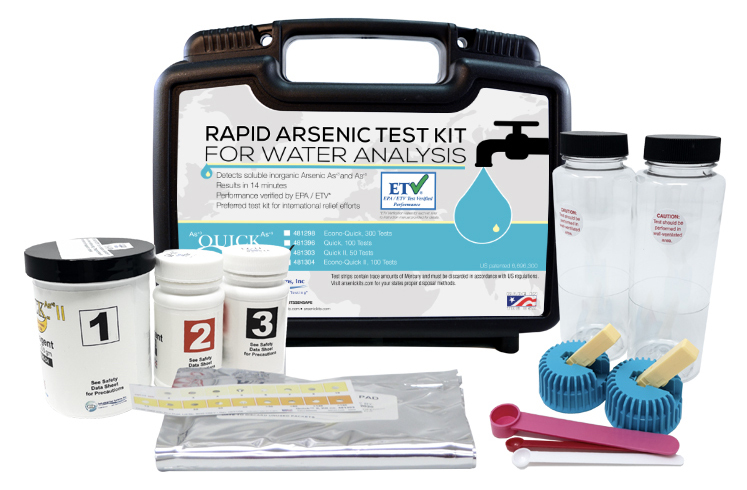AdEdge knows Arsenic
Posted by admin on Sep 3rd 2013
Georgia based AdEdge Water Technologies specializes in the design, manufacturing, and supply of innovative technologies, specialty medias, membranes, and integrated systems that removes harmful contaminants like arsenic from water. They were selected by the United States Environmental Protection Agency (USEPA) to provide 12 demonstration projects for arsenic removal using their unique treatment technologies. Project Manager Myron Petro enlightens us about AdEdge and why they use our Arsenic Quick test kits.
1. What makes your arsenic removal treatment systems unique?
AdEdge’s arsenic removal systems have a high efficiency of arsenic (V) and arsenic (III) reduction over a wide pH range and water chemistry. We also offer several treatment technologies for arsenic removal depending on water chemistry, budget, system size, and other site-specific conditions or limitations.
2. You’ve installed arsenic removal systems from Clinton, New Jersey to San Antonio de los Cobres, Argentina. What is the biggest challenge you face?
Funding is a big challenge we face. The budget cuts in the EPA State Revolving Fund have definitely caused some projects that seemed to be near-term to move further out on the timeline. The US economy is slowly rebounding and with that rebound, we expect that infrastructure projects will gain momentum in the near future.
3. What makes our inorganic arsenic Quick kits appealing to AdEdge?
We definitely like the simplicity and easy to follow steps of your field test kits. The primary kit that we use internally is your Arsenic Quick II 50 test kit. Its accuracy is great and it’s easy to transport on field service calls, system start-ups and pilot tests. We have yet to find another arsenic testing solution that provides us with the features and accuracy that we get with the Arsenic Quick II.
4. You also have a non-profit organization?
Yes. Helping Hands For Water was started by a group of AdEdge employees in 2010 as a way to use our time, knowledge, and resources to provide clean drinking water to communities who do not have that basic human right.


